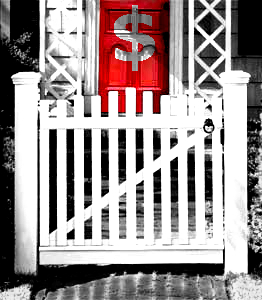Councils could make first move on mergers
 By the end of June, Sydney's 41 councils must decide whether to merge with some of their neighbours, or risk being rated “not fit for the future”.
By the end of June, Sydney's 41 councils must decide whether to merge with some of their neighbours, or risk being rated “not fit for the future”.
Many want to remain as they are, but as the June 30 deadline looms several councils are wondering if merging with their neighbours rather could spare them from the mega-mergers proposed in a report released by the Baird government in 2013.
Debate rages as to whether local governments need to get bigger to meet the challenges of modern cities.
The 2013 ‘Sansom report’ has been criticised for being light on empirical evidence that larger councils are better, but laden with theoretical arguments.
“Whilst a substantial number of councils could continue more or less on their current path for several decades to come, very few are actually realising their full potential as partners in the system of government,” the report said.
“There is a great deal of under-achievement in local government and its resources and skills could be used to far greater effect to address the challenges facing NSW. Progress is now being made but far more needs to be done in areas such as joint strategic planning, information exchange, co-operative policy development, and resource sharing.”
Reports say a number of councils are considering knocking down their fences.
The Liberal mayor of Randwick, Ted Seng, has discussed moves to merge with Waverley and Woollahra.
Waverley mayor Sally Betts, also form the Liberal Party, has expressed a level of interest, but the Woollahra mayor, Toni Zeltzer, is reportedly resisting.
Under the Sansom plan, these three councils would be crammed in with Botany Bay Council to the south and City of Sydney to the west, forming a “global city” council with over 500,000 ratepayers.
In Sydney’s inner west, six councils - Leichhardt, Marrickville, Ashfield, Canada Bay, Burwood and Strathfield – are facing the protepect of a merger.
The Labor mayors from these jurisdictions met this week to discuss plans, including an idea to only merge Burwood, Strathfield and Canada Bay.
Genia McCaffery, an independent and former mayor of North Sydney, told Fairfax Media reporters that there are fears among independents and smaller parties that larger councils would make it harder to get elected.
She said larger councils mean more expensive campaigns, an advantage for larger parties with deeper pockets.
“The conversations that councils are having is a good thing, because they are having to identify what capacity they need from a financial and strategic perspective to deliver services to their communities in the decades to come,” McCaffery, also a former president of the Australian Local Government Association, said.
Pledges for local government reform came second only to power privatisation in NSW Premier Mike Baird’s take-over from the disgraced Barry O’Farrell.
State-level chatter on amalgamations has been low, but insiders say that might change if the Government gets serious on forced mergers, and councils are made to raise their voices.
One clear option for councils to avoid being shoved together is for them to form regional organisations that cover several neighbouring jurisdictions.
These groups could then arrange joint contracts for services like waste management, road making, and general procurement.
This idea has almost certainly been raised at recent meetings between councils, though it is unclear whether the Baird government might accept the halfway agreement.







 Print
Print